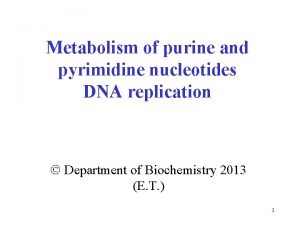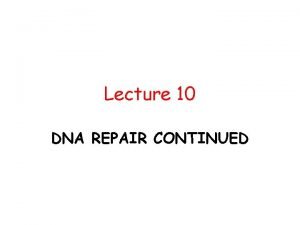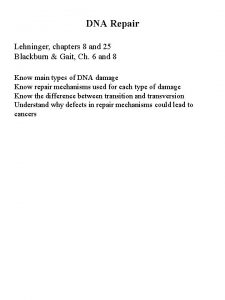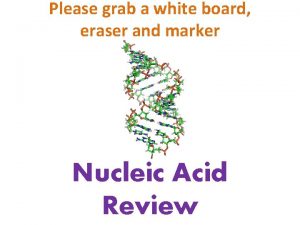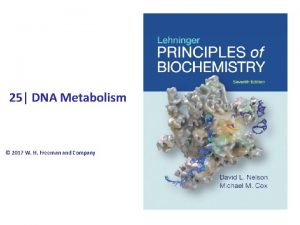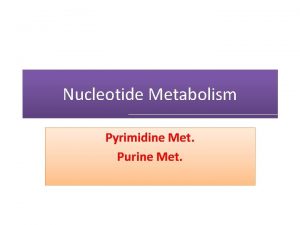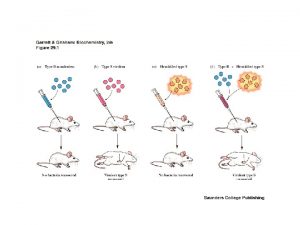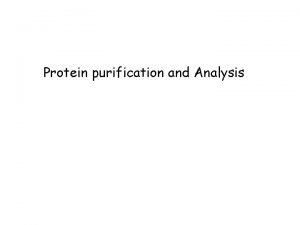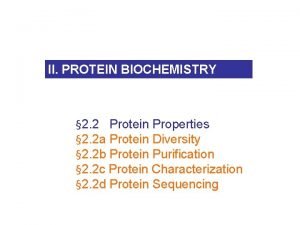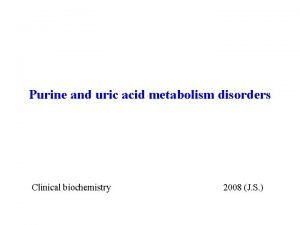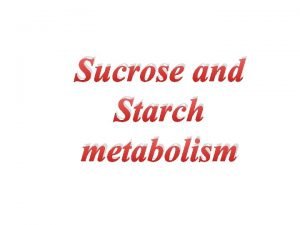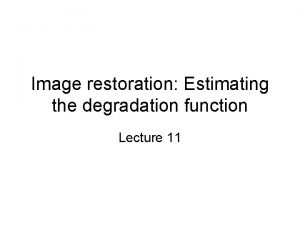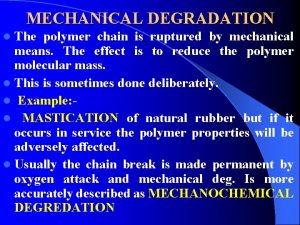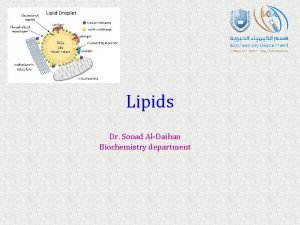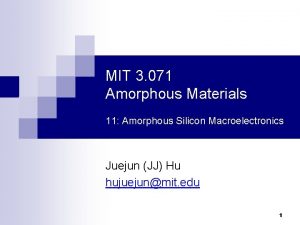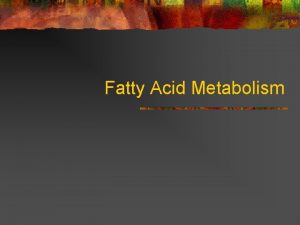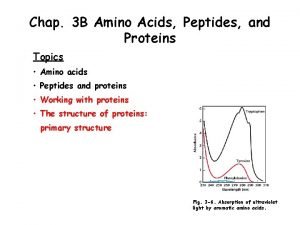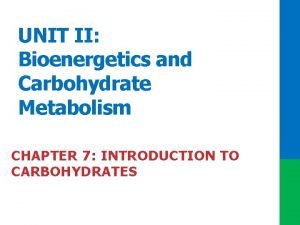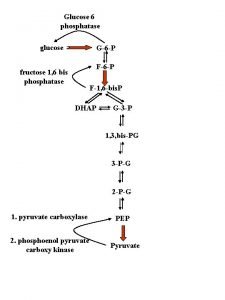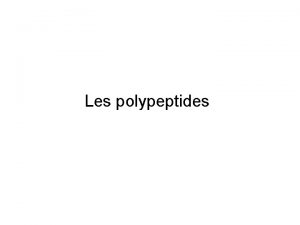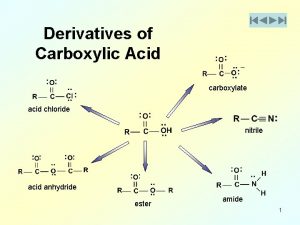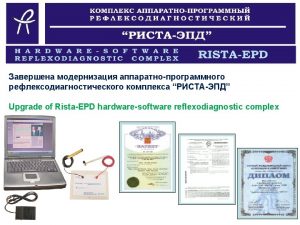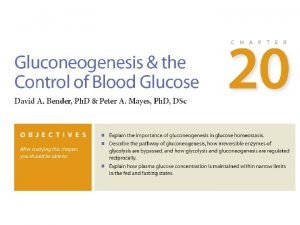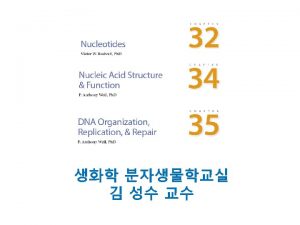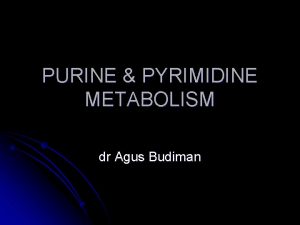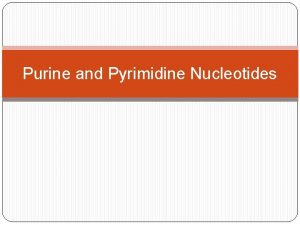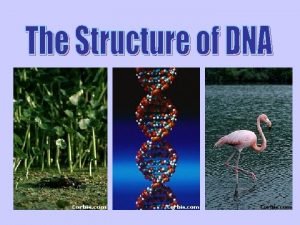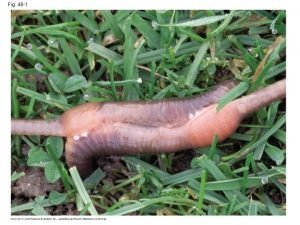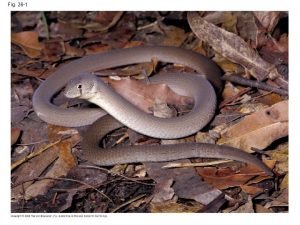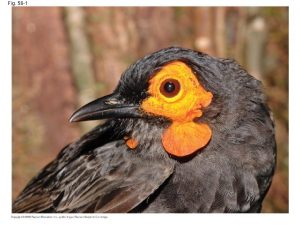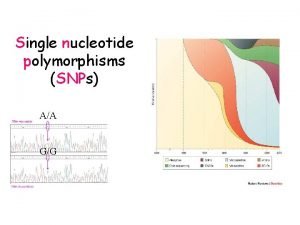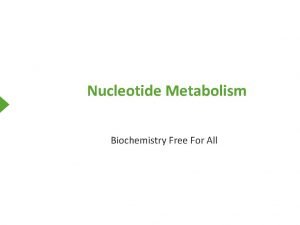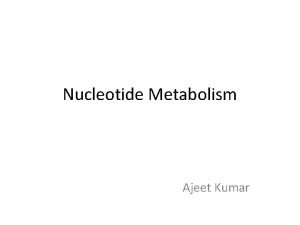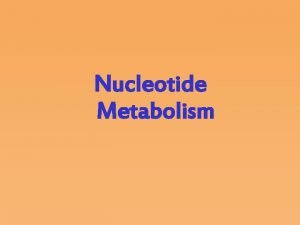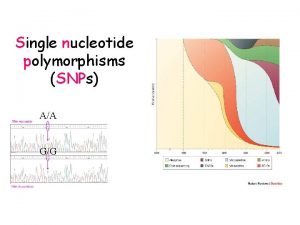Fig 14 29 Nucleotide degradation PurineAMPGMPuric acid Pyrimidine


































- Slides: 34


Fig. 14. 29



核苷酸分解(Nucleotide degradation) • 在人類與鳥類 • Purine(AMP、GMP)分解的終產物是uric acid • Pyrimidine被分解成 -alanine或 -aminoisobutyric acid • cytidine、uridine -alanine • thymine -aminoisobutyric acid


Degradation of purines produces uric acid



核苷酸(Nucleotide)合成 • Nucleotide: 含三個部分: 一個氮鹼基、一個五碳糖與一 個、二個或三個磷酸。 • 氮鹼基: 含嘌呤(purine)或嘧啶(pyrimidine),由具有類 苯環(aromatic ring)的結構,因此在p. H 7時對260 nm的 UV光具有吸收性。 • Purine: 含adenine、guanine、xanthine與hypoxanthine。 • Pyrimidine: 含thymine、cytocine與uracil

鹼基(nitrogen base)



核苷(Nucleosine) • 五碳糖分成兩類: 核糖(ribose)與去氧核糖 (deoxyribose) • Nucleosine: 不接磷酸的核苷。 • purine或pyrimidine接在五碳糖的C-1的部位,以 -NGlycosidic形式接合。 含ribose的nucleiside: adenosine、guanosine、 cytosine與uridine。 • 含deoxyribose的nucleoside: deoxyadenosine、 deoxyguanosine、deoxycytosine與deoxythyminosine。



• Purine nucleotide合成 • -D-ribose-5 -phosphate + ATP PRPP + AMP • -D-ribose-5 -phosphate是來自Pentose phosphate pathway。反應是由PRPP synthetase,再經過9個步驟後 形成IMP,IMP再合成AMP或GMP。 • AMP + ATP 2 ADP • NMP + ATP NDP + ADP • 再由Nucleotide diphosphate kinase合成NTP • N 1 DP + N 2 TP N 1 TP + N 2 DP


Fig. 14. 24

Fig. 14. 25




Pyrimidine nucleotides的合成 • Carbamoyl phosphate synthetase II位於細胞質中催化 生成Carbamoyl phosphate反應如下: • 是合成pyrimidine途徑的第一反應,也是關鍵酵素。 • Carbamoyl phosphate synthetase I在粒線體中,是合 成Urea第一個反應。

Fig. 14. 27

• pyrimidine的合成與purine不一樣,先合成出乳清酸 (orotate) • orotate + PRPP OMP UMP • • UMP是合成CTP的先驅物 • UMP UTP CTP •


• Deoxyribonucleotides的合成: • 以上所提及都是ribonucleotide(A、G、U與C)是組成RNA的 建材分子(building block)。 • 而DNA的合成是由 2’-deoxyribonucleotide(A、T、C、G) 組成。 • 2’-deoxyribonucleotide是由NDP(nucleotide diphosphate)還原合成而來。 反應是由還原態的Ribonucleotide reductase催化, Thioredoxin reductase(13 k. Da NADPH是其輔因子)再催化氧 化態的Ribonucleotide reductase成還原態。

Thymidylate is derived from d. CDP and d. UMP The immediate precursor of d. TMP is d. UMP. In bacteria, the pathway to d. UMP begins with formation of d. UTP, either by deamination of d. CTP or phosphorylation of d. UDP. The d. UTP is converted to d. UMP by a d. UTPase. The latter reaction must be sufficient to keep d. UTP pools low and prevent incorporation of uridylate into DNA.

Conversion of d. UMP to d. TMP by thymidylate synthase and dihydrofolate reductase One-carbon is transferred, and then reduced to a methyl group.


Thymidylate synthesis and folate metabolism as targets of chemotherapy • Another prominent chemotherapeutic agent, methotrexate, is an inhibitor of dihydrofolate reductase. • This folate analog acts as a competitive inhibitor; the enzyme binds methotrexate with about 100 times higher affinity than dihydrofolate. • Aminopterin is a related compound that acts similarity.

Thymidylate synthesis and folate metabolism as targets of chemotherapy

 Fig.2
Fig.2 Nucleotide sequence vs amino acid sequence
Nucleotide sequence vs amino acid sequence Nucleotide acid
Nucleotide acid Nucleotide to amino acid
Nucleotide to amino acid Pyrimidine
Pyrimidine Purines and pyrimidines
Purines and pyrimidines Pyrimidine dimer
Pyrimidine dimer Pyrimidine examples
Pyrimidine examples Pyrimidine dimers
Pyrimidine dimers Label nucleotide
Label nucleotide Pyrimidine dimers
Pyrimidine dimers Pyrimidines and purines
Pyrimidines and purines Purine examples
Purine examples Linear position invariant degradation
Linear position invariant degradation Edman degradation
Edman degradation Edman degradation
Edman degradation Final product of purine degradation
Final product of purine degradation Sucrose synthesis
Sucrose synthesis Noise
Noise Conclusion of environmental degradation
Conclusion of environmental degradation Estimation of degradation function
Estimation of degradation function Mechanical degradation
Mechanical degradation Jurawatt
Jurawatt Tag degradation
Tag degradation Light induced degradation
Light induced degradation How environmental degradation occurs
How environmental degradation occurs Metabolismn
Metabolismn Purification table
Purification table Abnormal degradation of disaccharides
Abnormal degradation of disaccharides Glucose 6 phosphatase
Glucose 6 phosphatase Edman degradation
Edman degradation Land degradation definition
Land degradation definition How environmental degradation occurs
How environmental degradation occurs Hydrolysis of nitrile group
Hydrolysis of nitrile group Example of acid-fast bacteria
Example of acid-fast bacteria





